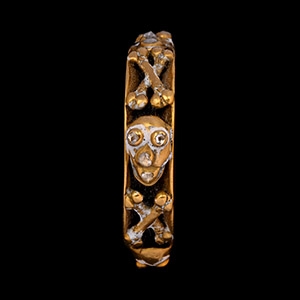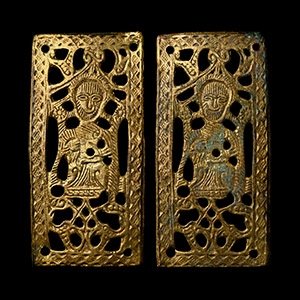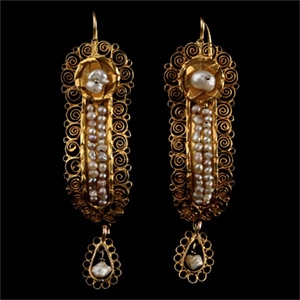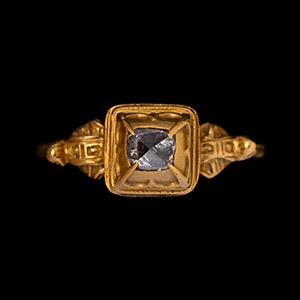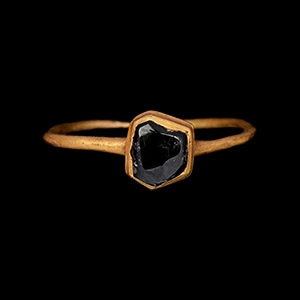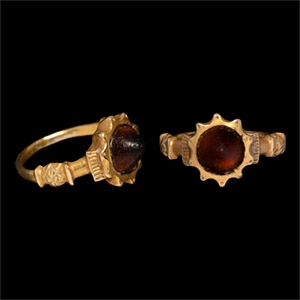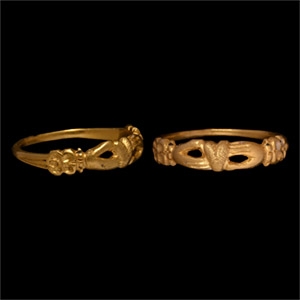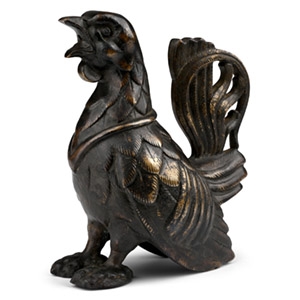Home > Auctions > 9 - 17 September 2025
Ancient Art, Antiquities, Books, Natural History & Coins
From the private collection of a London gentleman, from his grandfather's collection formed before the early 1970s.
This lot is accompanied by an illustrated lot declaration signed by the Head of the Antiquities Department, Dr Raffaele D'Amato.
Cf. Sedov, B.B., Finno-Ugri i Balti v Epokhi Srednevekovija, Moscow, 1987, pl.XXIX, item 19, for type.
From the private collection of a London gentleman, from his grandfather's collection formed before the early 1970s.
This lot is accompanied by an illustrated lot declaration signed by the Head of the Antiquities Department, Dr Raffaele D'Amato.
Cf. Arbman, H., Birka I: Die Gräber, Uppsala, 1940, pl.144.
From the private collection of a London gentleman, from his grandfather's collection formed before the early 1970s.
This lot is accompanied by an illustrated lot declaration signed by the Head of the Antiquities Department, Dr Raffaele D'Amato.
Cf. Sedov, B.B., Finno-Ugri i Balti v Epokhi Srednevekovija, Moscow, 1987, pl.XXIX, item 19, for type.
Private collection of a North London lady before 2000.
Property of a London, UK, gentleman.
This lot has been checked against the Interpol Database of stolen works of art and is accompanied by search certificate number no.12771-237884.
This lot has been cleared against the Art Loss Register database, and is accompanied by an illustrated lot declaration signed by the Head of the Antiquities Department, Dr Raffaele D'Amato.
Cf. PAS no. HESH-23A8A2, for similar.
The memento mori jewellery of the 16th and 17th centuries served as wearable ‘reminders of mortality’. Typical motifs within this genre included skulls, skeletons, crossbones, hourglasses, coffins, the gravedigger’s pick and shovel, and various other emblems of death and decay.
Acquired on the European art market in the 1990s.
UK collection of a European gentleman.
This lot is accompanied by an illustrated lot declaration signed by the Head of the Antiquities Department, Dr Raffaele D'Amato.
Cf. Chadour, A.B., Rings. The Alice and Louis Koch Collection, volume I, Leeds, 1994, item 567, for a more ornate example of the type.
Ex central London gallery; acquired on the UK art market.
From the private collection of John Meredith, acquired since the 1990s; thence by descent.
This lot is accompanied by an illustrated lot declaration signed by the Head of the Antiquities Department, Dr Raffaele D'Amato.
See Popović, D., Riznica spasenja. Kult relikvija i srpskih svetih u srednjovekovnoj Srbiji /The Treasury of Salvation. The Cult of Relics and Serbian Saints in Medieval Serbia, Beograd, 2018.
The medieval Kingdom of Serbia was in its material culture strongly under the influence of Byzantium, but had also undergone cultural and artistic developments from western countries. The decoration - especially the technique of filigree and granulation, and the ornamental motifs and their composition - shows some similarities both to the Byzantine and to the Western gold work of the 11th–13th century. The openwork decoration of these objects is similar to the foliage represented on one sarcophagus positioned against the south wall of the church of St Demetrius, in the Patriarchate of Peć, dated to the 14th century AD.
Ex Georgie Chrischilles.
Private collection, London.
This lot is accompanied by an illustrated lot declaration signed by the Head of the Antiquities Department, Dr Raffaele D'Amato.
Private collection of a North London lady before 2000.
Property of a London gentleman.
This lot has been checked against the Interpol Database of stolen works of art and is accompanied by a search certificate number no.12754-236647.
This lot has been cleared against the Art Loss Register database, and is accompanied by an illustrated lot declaration signed by the Head of the Antiquities Department, Dr Raffaele D'Amato.
Cf. Scarisbrick, D., Rings: Jewelry Of Power, Love and Loyalty, Thames & Hudson, London, 2013, pp.306-307, for similar rings and diamonds; cf. The V&A Museum, accession numbers M.220-1975 and 934-1871, for broadly comparable examples.
This type ring seems to have been very popular in Renaissance Europe during the late 16th and early 17th centuries. Numerous parallels and portraits give evidence for this fashion. Similar ring types are in the National Museum of Bargello, Firenze, and Ashmolean Museum, Oxford.
Found whilst searching with a metal detector near Caunton, Newark and Sherwood, Nottinghamshire, East Midlands, by David Dillon on Thursday 19th May 2022, declared as Treasure and disclaimed by the Crown with Treasure case no.2022 T752.
Accompanied by a copy of the British Museum's Portable Antiquities Scheme (PAS) report no.DENO-23C183.
Accompanied by a letter from the finder describing the circumstances of finding.
This lot has been checked against the Interpol Database of stolen works of art and is accompanied by a search certificate number no.12899-237641.
This lot is accompanied by an illustrated lot declaration signed by the Head of the Antiquities Department, Dr Raffaele D'Amato.
Cf. Egan, G. & Pritchard, F., Dress Accessories 1150-1450, London, 2002, item 326, fig.215, no.1612, in particular; and other examples recorded with the Portable Antiquities Scheme with reference nos.BERK-57430E (2019 T158), DUR-602602 (2019 T35), and HAMP-6C5109 (2017 T761).
Ex German art market, 2000s.
Acquired from an EU collector living in London.
From the collection of a Surrey, UK, gentleman.
This lot is accompanied by an illustrated lot declaration signed by the Head of the Antiquities Department, Dr Raffaele D'Amato.
From an old European collection, 1990s.
From a Cambridgeshire, UK, private collection.
This lot is accompanied by an illustrated lot declaration signed by the Head of the Antiquities Department, Dr Raffaele D'Amato.
The fine craftsmanship and design suggest it could have been a ring commemorating the wedding of Charles II and Catherine of Braganza in 1662.
From the Minervino Gabardi collection.
This lot has been checked against the Interpol Database of stolen works of art and is accompanied by a search certificate number no.12837-240227.
This lot has been cleared against the Art Loss Register database, and is accompanied by an illustrated lot declaration signed by the Head of the Antiquities Department, Dr Raffaele D'Amato.
For comparison see Franco Maria Ricci, Aquamanili: medieval objects for sacred and profane use, fig. 25, for a similar model in the shape of a rooster, Lower Saxony manufacture, mid-13th century,
Exhibited at the Museum Für Kunsthandwerk, Frankfurt, Germany.
205 - 216 of 3897 LOTS

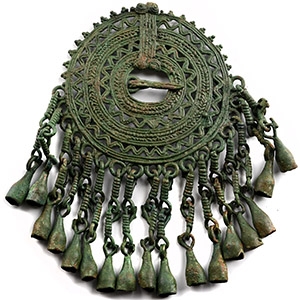
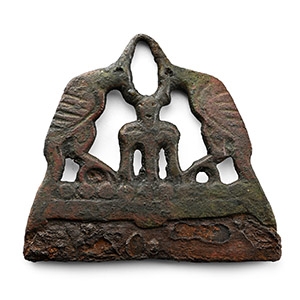
.jpg)
